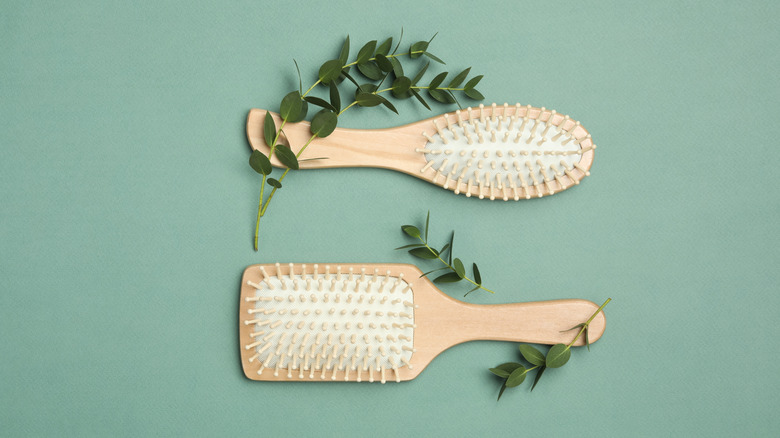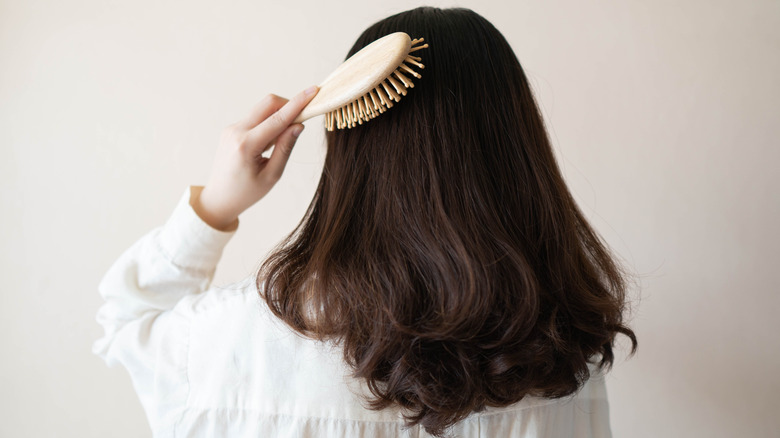Here's How Often You Should Be Cleaning Your Hairbrushes
When it comes to your hairbrush, how much hair do you let accumulate before you decide to give it a good cleaning? If you let it go for a while, don't feel bad. We all do it.
But, beyond the unsightly stray hairs and product buildup, there's a bigger reason why you need to clean your hairbrush a lot more often. According to a study by the University of Arizona, the longer your brush goes unwashed, the more bacteria accumulates on it (via Glamour UK). The study describes the number of bacteria hiding in the bristles of your brush as equivalent to the number of bacteria in a bathtub drain. Now imagine depositing all of that bacteria into your hair with every swipe of your brush. Yikes.
So that brings up the question: How often should you actually clean your hairbrush — and what's the best way to do it? Keep reading to find out.
When and how to clean your hairbrush
How often you should be cleaning your hairbrush depends on how much you use it. Francesca Fusco, a dermatologist in New York City, told Allure that, at a bare minimum, you should deep clean your brush at least once a month and spray clean it weekly. She also explained that the type of shampoo and products in your hair care routine also contribute to bacteria buildup.
"The less you shampoo, the more you use dry shampoo, the more you have dandruff, the more styling products you use, then the more frequently you should clean your brush," she explained (via Allure). "Residue, dead skin cells, and oil colonize the brush and can be a nidus for bacteria and yeast, which in general is not good and can smell unpleasant."
Kerry E. Yates, trichologist and founder of Colour Collective, recommends cleaning your brush weekly to avoid clogging your hair follicles and irritating your scalp, per Byrdie. She also said to avoid too many hair products that contain oil.
Cleaning your hairbrush is a simple process. Per Healthline, you only need warm water, a sink, shampoo, scissors (or a rat tail comb), and baking soda. Your first order of business is removing any hair caught in your brush's bristles. The scissors will come in handy for stubborn hairs.
Once you've gotten rid of the tangled hair, set your brush aside. Byrdie recommends filling your sink with hot water and mixing in a tablespoon of baking soda and shampoo. This solution will help get rid of the bacteria on your brush. Dip your brush in and out of the solution for roughly three to five minutes. But, according to Healthline, you may also need a toothbrush for extra scrubbing, depending on how dirty your brush is. When you're done cleaning it, per Real Simple, put your wet brush on a towel, and let it dry overnight.

